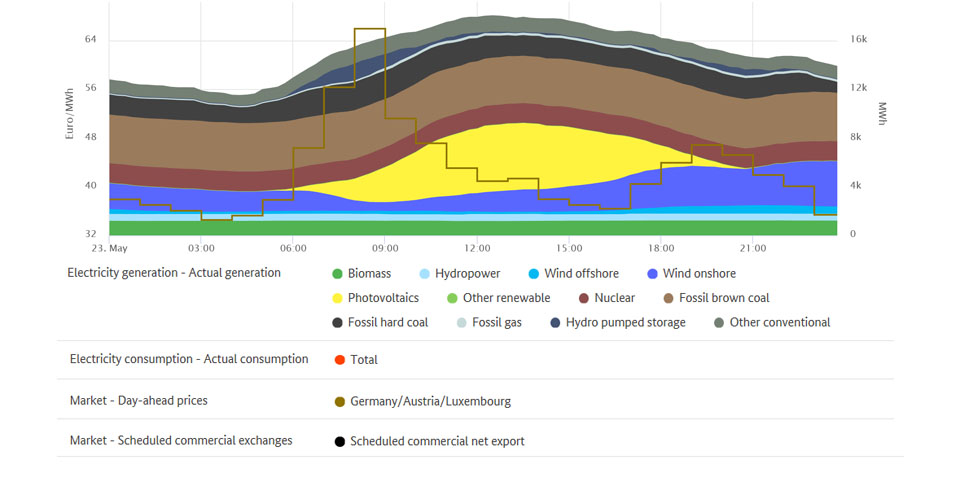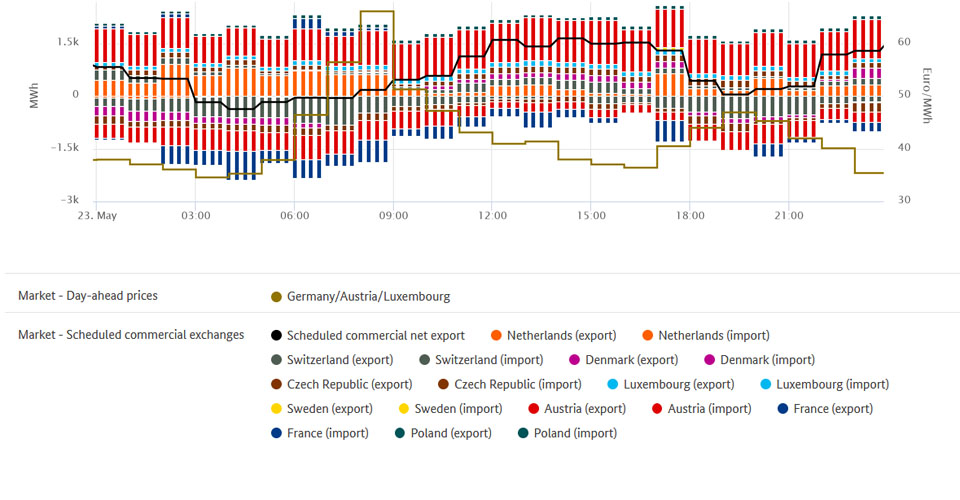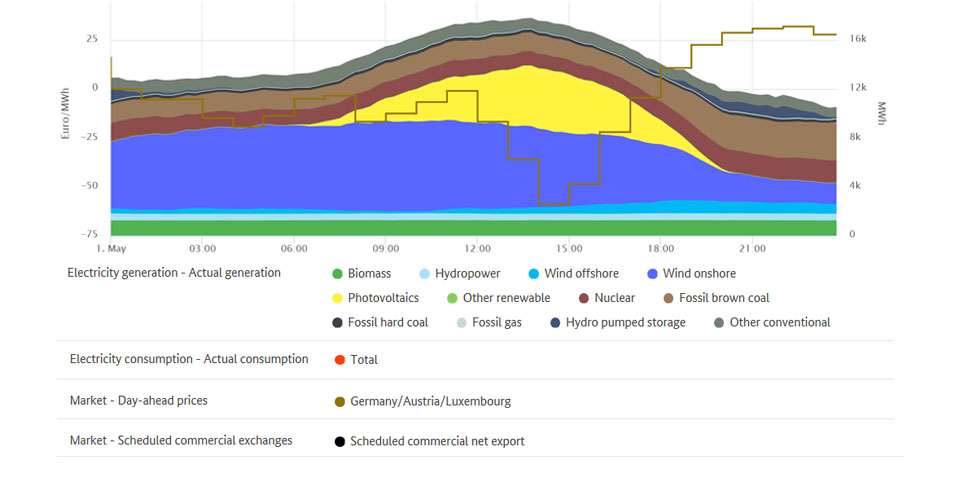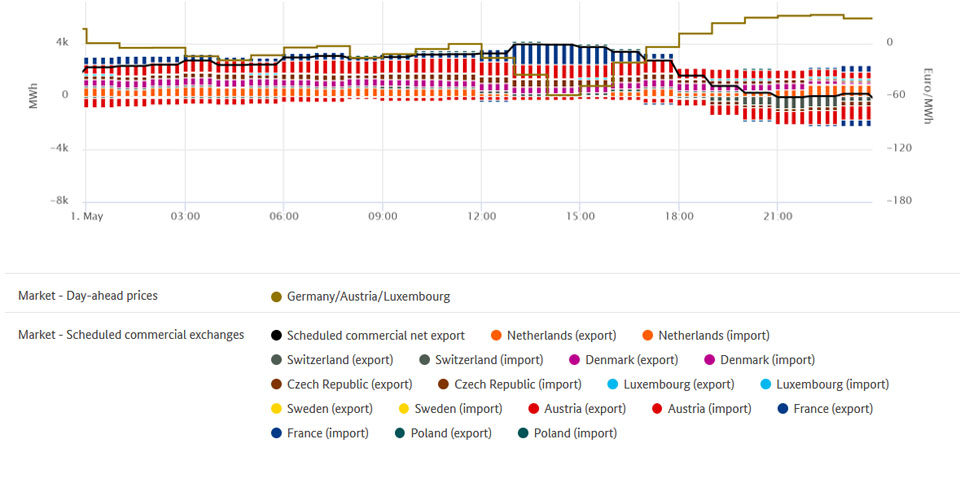Hint: This website is not optimized for your browser version.
Electricity trade in May and June 2018
12 July 2018 – Germany again exported more electricity than it imported in the last two months. Net exports fell, however, by around 55% compared with the same period of the previous year. The largest importers of electricity produced in Germany were the Netherlands, Austria and Luxembourg. The wholesale price of electricity averaged €37.91/MWh, which is significantly higher than the average price in the same period of the previous year.
In May and June, Germany's commercial net exports amounted to 3,987 GWh, equivalent to almost 5% of the electricity generated in the country during that period, and a year-on-year decrease of 55.4%. One reason for this decrease is the fact that generation from conventional sources was down by almost 5,000 GWh, while consumption remained more or less the same. One of the causes of the reduction in conventional generation was the closure of nuclear and black-coal power plants with a total capacity of nearly 4 GW. In general, however, this also shows that conventional plants are increasingly better able to adapt to changes in electricity demand and output from renewables. The main customer for Germany's net exports (exports less imports) was the Netherlands, which accounted for 3,074 GWh (up 33.7% compared to the previous year). Austria followed in second place with 2,005 GWh (down 57%), ahead of Luxembourg with 679 GWh (down 1.4%).
Germany was a net importer of electricity from Switzerland, France and Czechia, with net imports totalling 2,677 GWh, almost three times as much as in the previous year. Electricity trading with Sweden remained disrupted throughout May, because of the failure of the Baltic Cable, the only direct electricity link between Germany and Sweden, which has a maximum transmission capacity of 600 MW. Stable trading was not possible until repair and maintenance work on the undersea cable between Kruseberg in Sweden and Lübeck-Herrenwyk in Germany was completed. In May and June, Germany's net exports to Sweden totalled 34 GWh, compared to imports of 362 GWh in the same period of the previous year. A look at the prices shows that this year, in contrast to 2017, prices in Sweden were on average higher than in Germany, which explains the change in the direction of trading.
These observations can be presented in a chart using SMARD's market data
The chart gives an overview of Germany's commercial electricity trade with the above-mentioned countries. (Gross) exports are shown above the zero line while (gross) imports are shown below the zero line.
The wholesale price in Germany
Wholesale prices for electricity were higher compared to a year earlier. In May and June, the hourly products on the EPEX day-ahead market were traded at between 65.99 euros and minus 58.96 euros per megawatt hour (€/MWh), resulting in an average price of €37.91/MWh, corresponding to a year-on-year increase of €7.68/MWh.
On the day-ahead market exchange, the highest price of the past two months of €65.99/MWh was recorded on Wednesday, 23 May, between 8am and 9am. At that time in the morning, the sun was just rising – and therefore not yet at full strength – and winds were not as strong as during the rest of the day. Despite the high price, Germany sold 664 MWh of electrical energy to its neighbouring countries during this one-hour period, since only Czechia and Switzerland had lower prices.
The lowest electricity price of minus €58.96/MWh was recorded on Tuesday, 1 May, between 2pm and 3pm; then, exports totalled 15.5 GWh. Renewables then also supplied all of the electricity consumed in Germany. The high level of supply together with the low level of consumption that is common on public holidays resulted in this negative price. Through the electricity market, the power plant operators sold the capacity that they had kept on the grid at negative prices in Germany and also exported electricity to neighbouring countries.



